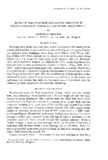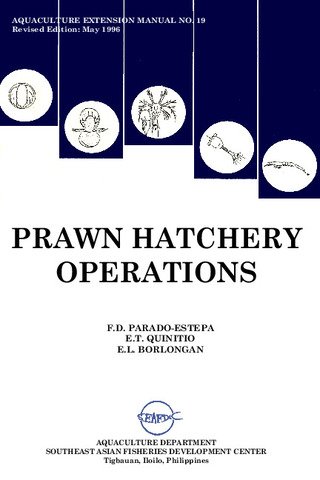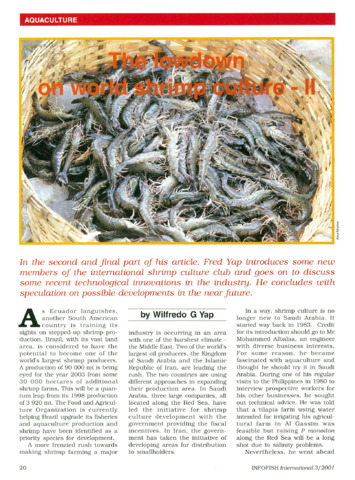Notes on the courtship and mating behavior in Penaeus monodon Fabricius (Decapoda, Natantia)
- Global styles
- MLA
- Vancouver
- Elsevier - Harvard
- APA
- Help

View/
Date
1979Author
Page views
2,071AGROVOC keyword
Taxonomic term
Metadata
Show full item record
Share
Abstract
Courtship and mating behavior in the sugpo or giant tiger prawn, Penaeus monodon Fabricius, are described. These are divided into three phases: parallel swimming of male and female; male turns ventral side up to female; and, male turns perpendicular to female, curves body around female and flicks both head and tail. Comparison with observations on P. japonicus and P. stylirostris is made.
Suggested Citation
Primavera, J. (1979). Notes on the courtship and mating behavior in Penaeus monodon Fabricius (Decapoda, Natantia). Crustaceana , 37(3), 287-292. https://doi.org/10.1163/156854079X00609
Type
ArticleISSN
0011-216XCollections
- Journal Articles [1258]
Related items
Showing items related by title, author, creator and subject.
-
An overview of the nutrition, feed and feeding techniques of prawn penaeid/shrimps
Piedad-Pascual, Felicitas (Philippine Council for Aquatic and Marine Research and Development, 1989)This paper echoes what transpired during the first International Conference of Penaeid Prawns/Shrimps held in Iloilo City in December 4-7, 1984, particularly on the Nutrition nd Feed Development. Around 25 papers were ... -
Series: Aquaculture extension manual; No. 19
Prawn hatchery operations
Parado-Estepa, Fe D.; Quinitio, Emilia T. ; Borlongan, Emeterio L. (Aquaculture Department, Southeast Asian Fisheries Development Center, 1996-05)
The manual, an updated version of the 1984 SEAFDEC/AQD manual, presents the underlying principles and step-by-step instructions of prawn larval and post-larval rearing. The techniques described are not only applicable to ...
; Borlongan, Emeterio L. (Aquaculture Department, Southeast Asian Fisheries Development Center, 1996-05)
The manual, an updated version of the 1984 SEAFDEC/AQD manual, presents the underlying principles and step-by-step instructions of prawn larval and post-larval rearing. The techniques described are not only applicable to ... -
The lowdown on world shrimp culture - II
Yap, Wilfredo G. (INFOFISH, 2001)This paper introduces some new members of the international shrimp culture club and goes on to discuss some recent technological innovations in the industry, particularly the polyculture of tilapia (mainly Oreochromis ...





